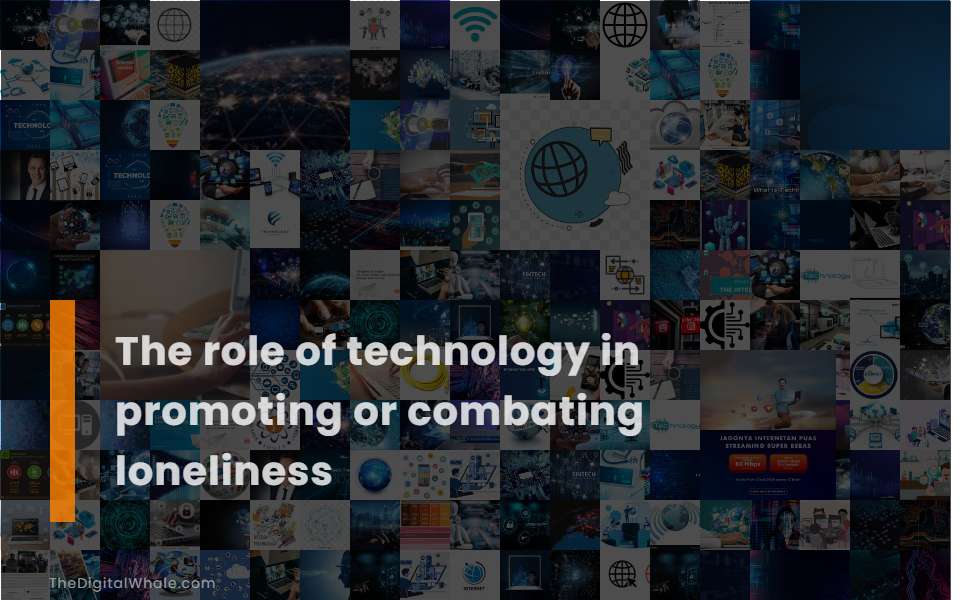The Role of Technology In Promoting Or Combating Loneliness
What is the effects of technology on loneliness and social isolation? Has technology made us less lonely? Let's find out more about The Role of Technology In Promoting Or Combating Loneliness.

Technology can reduce loneliness in older adults through social media, email, and online video services like Skype.
Technology can reduce loneliness in older adults through the use of social media, email, and online video services like Skype, as these tools help maintain and supplement face-to-face relationships, particularly for those who cannot engage in in-person interactions due to distance or mobility issues. To explore more about how psychology professionals view the impact of technology on isolation, you can visit the American Psychological Association's website.
For younger adults, reducing social media use can decrease feelings of loneliness.
For younger adults, reducing social media use can significantly decrease feelings of loneliness. Studies have demonstrated that high usage of platforms like Facebook, Snapchat, and Instagram can actually increase, rather than decrease, these feelings of isolation. By cutting down on time spent on these platforms, individuals can enhance their overall wellbeing and alleviate symptoms of anxiety, depression, and fear of missing out more commonly known as FOMO. For more information on the impact of social media on mental health, visit the comprehensive guide on HelpGuide.
Using technology to supplement face-to-face relationships can improve feelings of connectedness.
Using technology to supplement face-to-face relationships can significantly improve feelings of connectedness, especially for older adults who use tools like Skype to maintain contact with distant family members. This practice not only reduces loneliness but also enhances their sense of connection. Technology can enhance social connections when it supplements, rather than replaces, face-to-face interactions, allowing individuals to engage in a wide range of interactions. This can be particularly beneficial for practicing nonverbal decoding with a variety of communication partners and is especially advantageous for those with psychological or physical constraints. For more insightful perspectives, you might want to explore the research in Frontiers in Psychology, which offers comprehensive studies on the subject.
Overreliance on technology for social interactions can exacerbate loneliness.
Excessive use of technology, such as smartphones and social media, can hinder meaningful personal connections, leading to higher rates of loneliness and depression. This is especially prevalent among young adults who rely heavily on these platforms for social interactions. Overreliance on technology can exacerbate loneliness when it substitutes for face-to-face relationships rather than supplementing them. As discussed in studies highlighted by the GCF Global, this can result in increased feelings of isolation among heavy social media users. Addressing this issue requires a balanced approach, encouraging in-person connections alongside the benefits of digital interaction.
Robo-companions and animatronic pets can improve mental well-being and reduce loneliness in seniors.
Robo-companions and animatronic pets, such as those provided by New York State's Office for the Aging, have been shown to significantly reduce loneliness and improve mental well-being among seniors, with seventy percent of participants reporting reduced loneliness and a seventy-five percent decrease in pain. These animatronic pets simulate realistic sounds and motions, offering comfort and companionship without the need for care or feeding. For more details, visit the article on People.
Related:
What challenges does technology pose to organizations? What is the business case for adopting new technology? Let's find out more about The Obstacles and Challenges of Developing New Technologies.
Balanced social media usage can help combat loneliness, especially for those with difficulty meeting people face-to-face.
Balanced social media usage can help combat loneliness, particularly for populations that have difficulty meeting people face-to-face, such as the elderly, by providing a platform to maintain and forge meaningful connections. According to insights from GCFGlobal, social media can be an effective tool in reducing loneliness when used to enhance existing relationships or create new meaningful connections, rather than as a substitute for real-life social interactions.
Constant access to smartphones can prevent personal connections and increase loneliness.
Constant access to smartphones can prevent personal connections and increase loneliness by replacing face-to-face interactions with digital communication, leading to feelings of isolation, loneliness, depression, and anxiety. The widespread use of smartphones and social media can further exacerbate this issue, as it becomes a habit to reach for devices in free moments, thereby hindering the formation of meaningful personal connections. Such excessive reliance on technology can significantly contribute to adverse health outcomes and reduced well-being. For a deeper insight into this phenomenon, San Francisco State University discusses how digital addiction increasingly impacts mental health by fostering feelings of isolation and disconnection from in-person relationships.
Heavy social media use is linked to higher rates of social isolation and emotional harm.
Heavy social media use is linked to higher rates of social isolation and emotional harm, particularly among young adults, as it fosters social comparison and can lead to feelings of exclusion, stress, and insecurity, ultimately increasing depression and loneliness. According to an analysis from Penn Today, excessive social media usage prevents meaningful personal connections and promotes harmful social comparisons. This contributes significantly to a broader loneliness epidemic, exacerbating the mental health struggles prevalent in modern society.
Technology can facilitate meaningful connections, such as video calls and online group interactions, to alleviate loneliness.
Technology, particularly through interactive video chats and online group interactions, can significantly reduce feelings of loneliness and improve mental well-being by providing meaningful social connections, especially during periods of physical isolation. This is especially beneficial for older adults, as highlighted by Christian Health, where technology helps older adults stay connected by facilitating regular communication with loved ones through tools like Zoom. This reduces feelings of isolation and improves mental health by nurturing emotional well-being and cognitive stimulation.
Maintaining a healthy balance between technology use and personal connections is crucial to combating loneliness.
Maintaining a healthy balance between technology use and personal connections is crucial to combating loneliness, as technology can either reduce or exacerbate feelings of loneliness depending on how it is used and the age of the individual. For older adults, technology like video calling and social media can enhance social connections and reduce loneliness, while for younger adults, excessive social media use can increase feelings of loneliness. To combat loneliness, it is essential to use technology in a balanced way, ensuring it supplements rather than replaces face-to-face interactions. Balanced social media usage and using technology to connect with others who share similar interests can help reduce loneliness, especially for populations that struggle with in-person connections. For more insights into how technology can affect our social lives, you can read about how Technology Use and Loneliness are closely linked and the strategies to maintain a healthy interaction with both.
Related:
This sentence is too long. Please use less words. Why are some religions more popular than others? Let's find out more about Why Certain Technologies Become Popular While Others Fade Into Obscurity.
